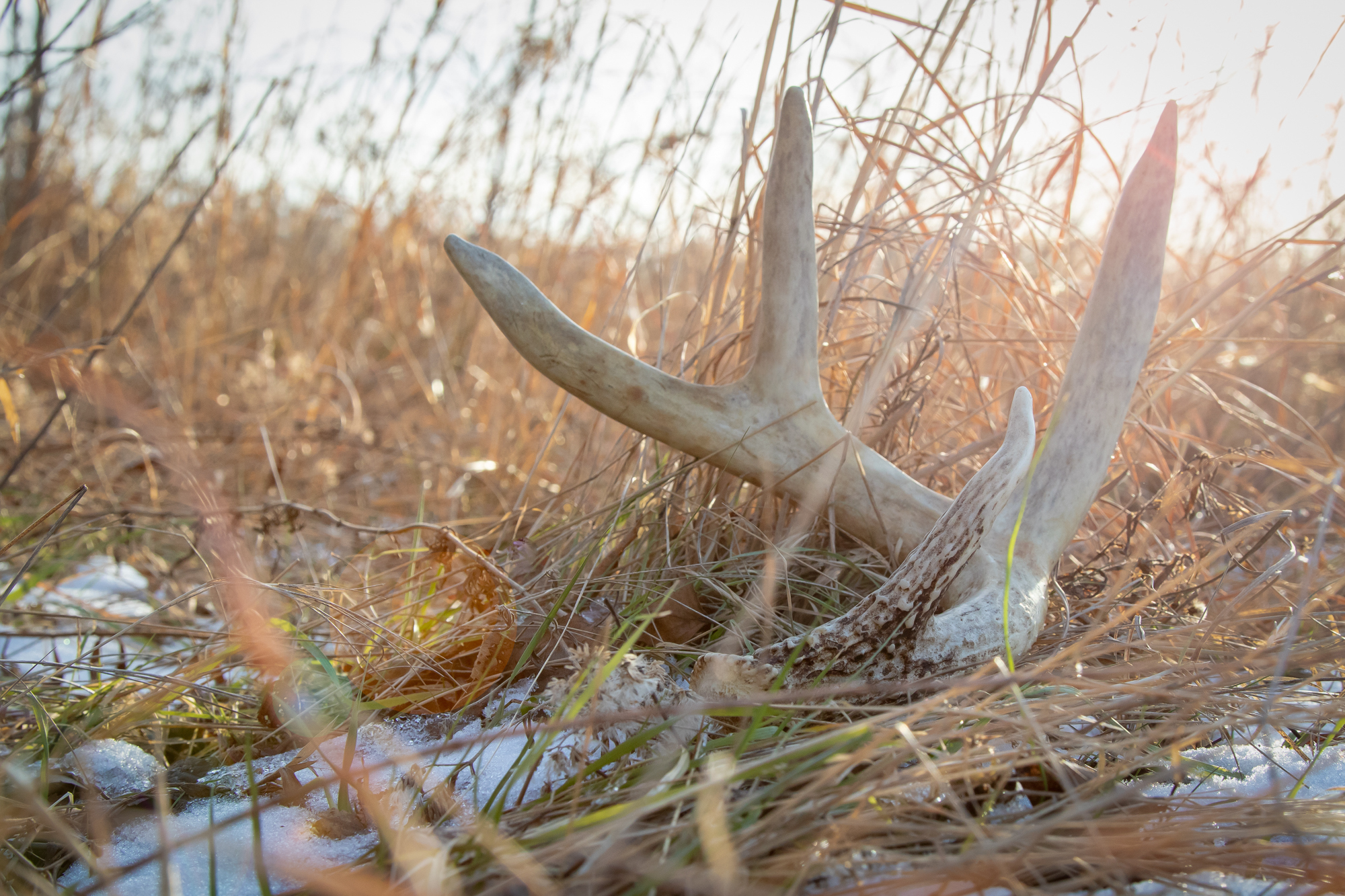Across deer and elk country, almost all bucks and bulls will have dropped their antlers by mid- to late-March. So when the weather starts warming and the snows start melting, it’s time to get into the woods and start shed hunting.
Put simply, shed hunting is about scouring the woods and fields to find the antlers that deer or elk drop in late winter and early spring. These shed antlers can be sold, used for DIY projects, or kept as trophies. But serious shed hunting will help you learn more about the animals you hunt in the fall. Diehard whitetail hunters pride themselves upon collecting the same buck’s sheds, year after year. Western shed hunters will backpack deep into the backcountry to find shed antlers from the biggest bulls in the unit. But before you get to that level, you’ve got to start with the shed hunting basics.
The best time to go shed hunting is when the woods are barren and brown, the grass and brush are pounded down, and crop fields and pastures are low to the dirt. Sheds are as visible as they’ll ever be, and ripe for the taking. So lace up your boots and go. Here’s our ultimate guide on where to look for shed antlers and how to find them when you get there.
Shed Hunting Tips in Whitetail Country
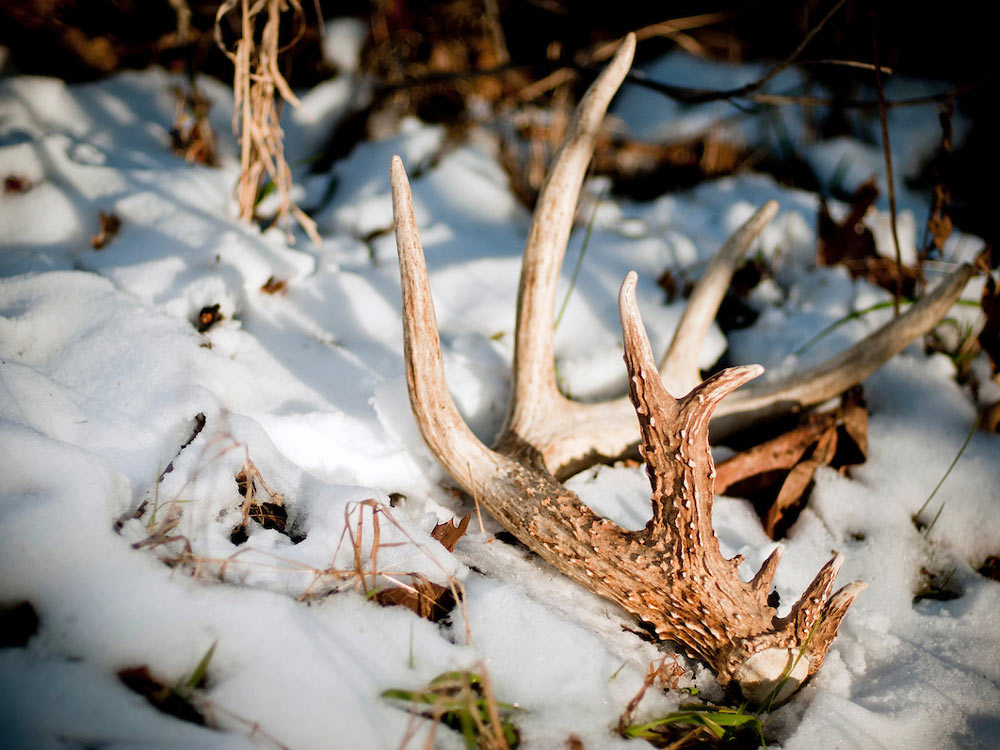
Shed Hunting Where the Deer Are
Most people naturally start looking for sheds in the same areas where they hunt deer each fall. You might find some bone in these places, or you might not.
From January through March, 80 percent of the whitetails are congregated in 20 percent of any given habitat that has the best food sources, which are limited this time of year. In this 20 percent pocket is where bucks cast their antlers, and where you need to look.
“I actually find few antlers in the same area I hunt, it’s just not the place where the deer spend the winter,” says South Dakota shed fanatic Kelly Kirsch, who picks up more than 100 antlers each year. “You need to find where the deer gather and feed from January until this time of year.”
If that is on the same ground where you hunt, great. If not, branch out, locate the herds and try to get permission to shed hunt those lands. The deer might be close, or hanging out a couple miles away.
Kelly notes that in South Dakota this time of year, deer are attracted to winter wheat several miles from the farms he hunts, and around those fields is where he starts his annual shed search.
Shed Hunting Ag Fields
Other late-season fields to check are soybeans with some pods still on the ground, and last year’s alfalfa and clover. Standing corn that was not cut for some reason is a sure-fire spot to scare up a few sheds. Corn stubble is good, too. While you might spot an antler or two out in the open, be sure to walk and check brushy and grassy field edges.
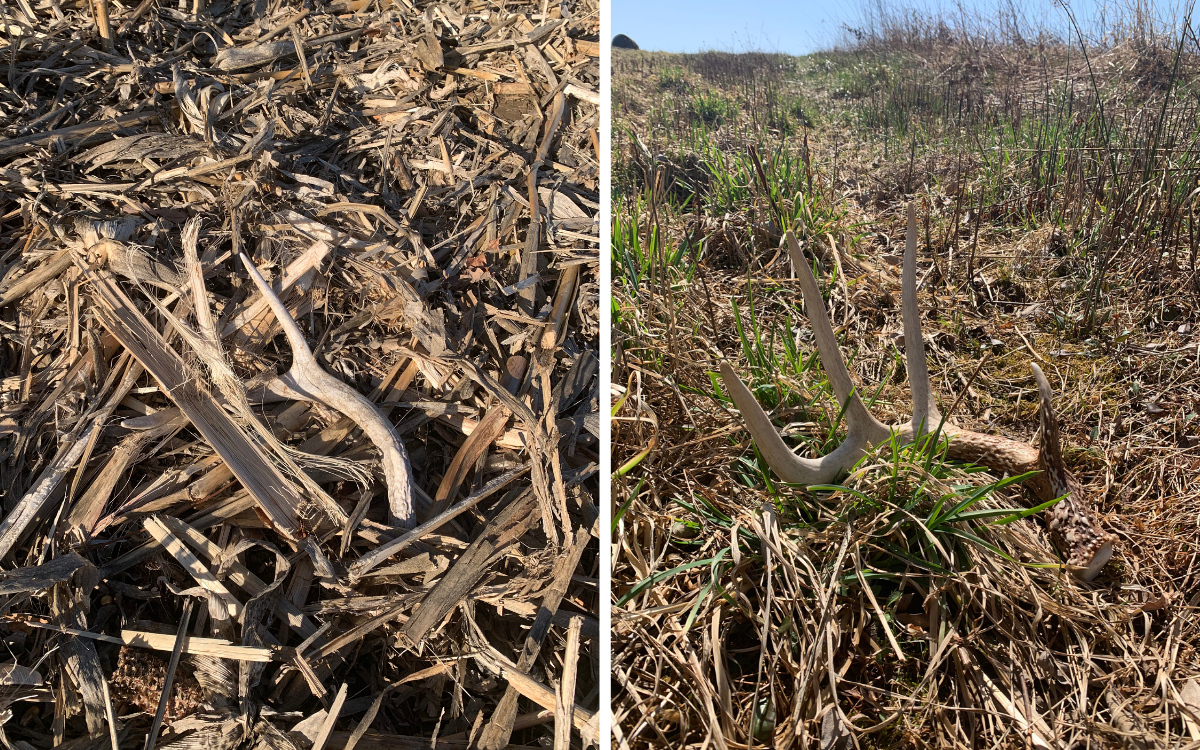
This is my favorite place to look: A scrubby, overgrown field with some browse, berries, locust trees (deer love the pods), and the like. In winter, many bucks feel comfortable feeding and hiding in these gnarly spots, and drop their antlers there.
Look in the Bedroom
Brushy, wooded staging areas within 100 yards of old crop fields is the next place to check. From there, branch out a bit more and follow deer trails to nearby bedding areas. Montana shed-hunting expert Dick Idol told me he finds his biggest sheds in thick cover where mature bucks stage in winter, and along multiple trails that link sanctuaries with nearby feed fields. Walk every muddy deer trail that you can, and you’ll find bone.
Put in the Boot Leather
Now that you have a good idea of where to start your search for antlers, and have secured permission to access as many private fields and woods that you can, get out there and go. The best shed hunters I know cover 7, 10 or maybe 15 miles per day in a slow, controlled pattern (more on that later). It’s not only fun, but great exercise—especially when you’ve been shut in for days. Wear comfortable boots and carry plenty of water.
Look South

As you hike, veer over and hit every east- and south-facing exposure, especially weedy fields and hillsides that are open to plenty of sunlight. Deer spent a lot of time loafing in these areas in January and February, and bucks often drop bone there. Go and find it.
Get Wet
Brown or white antlers are easiest to spot on an overcast day. If it is raining lightly, that’s fine. Bone will shine and catch your eye. Antlers are hardest to pick out in full, harsh sunshine.
Try the Soft Shoe
Roaming his Iowa farm one April day, Don Kisky stepped on what felt like a stick. He dug through the leaves and uncovered a 5-point shed that scored 75 inches. Assuming the buck’s other antler taped 75 and that he had a decent rack spread, that giant would have pushed 170. With his new rack the next fall, the deer would be Boone and Crockett, and living on Don’s farm. You might want to bag the hunting boots and wear sneakers or soft-soled trail runners so you can feel those big “sticks” you step on. Wear thin, lightweight hiking gaiters with your low tops to keep the weeds and thorns out.
Hunt Slow and Steady
Cover lots of ground in a slow, methodical manner and you’ll find twice as many sheds as you might have in the past. “Most people look right over antlers,” says my friend and whitetail expert Terry Drury. “They walk too fast and look too far out front.”
A shed hunt is not a race. Take it slow and deliberately, look straight down and scan every square foot of the ground. You might spot a whole antler, or maybe just a tine sticking up. Some sheds are white, others are brown and blend into the grass and leaves. “You’ve got to look close, real close,” says Drury.
Grid It Out
To keep from wandering aimlessly the woods, it helps me to mark off grids with trees, rocks, logs, and other landmarks. Walk each grid and look straight down around your feet for sheds, then move on to the next grid.
Hunt The Match Set
If you find a shed antler, don’t just take off to the next area. It’s worth grid searching or circling the area, gradually getting wider and wider in hopes of finding the matching side. Our friends at the National Deer Association recently released a study that shows how matched pairs spread out range-wise. Looking at 113 match sets, the data showed that after finding one side, the match side was found within 10 meters 56 times. 27 of the match sets were found within 10 to 100 meters, 23 from 100 to 500 meters, and the final 7 sets were found over 500 meters apart with the longest being 1,144 meters. That data shows that almost 75% of all match sets were found within 100 meters of the initial find. — Derek Horner
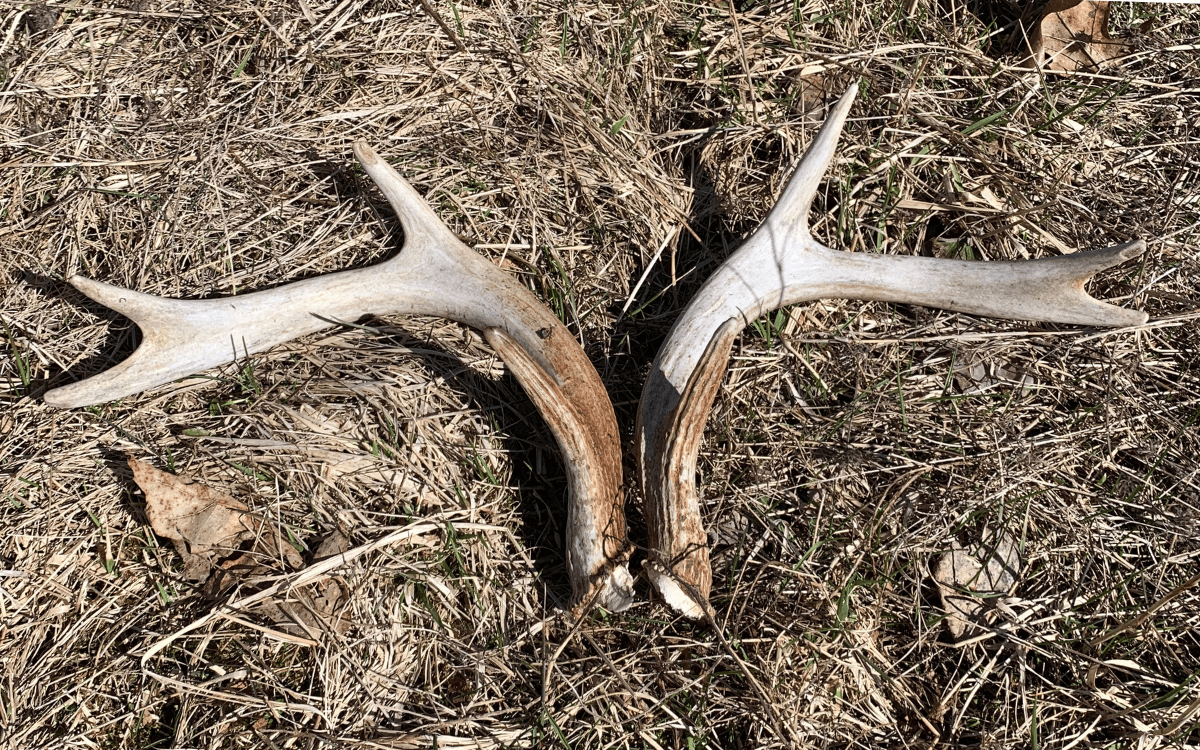
Go With Your Gut
“As you walk, look, think and get a feel for the lay of the land,” says Kirsch, who is one of the most accomplished shed hunters I know. “In your mind try to figure out what a buck was doing here two months ago in the cold and snow, where he was eating and going to bed. Listen to your subconscious. If your mind says bear left, go left. I can’t tell you how many times I’m walking and my brain says go this way, so I do and find a big antler.”
Go Back to the Well
If you find several good-sized sheds on a ridge or in a creek bottom, mark those spots on a map or drop a pin on Google Earth or an app like onX Hunt. Whitetails are habitual, and you’ll find more antlers there next year if crops and cover in the area remain the same. Come back next March and search again.
Shed Hunting Tips for the West
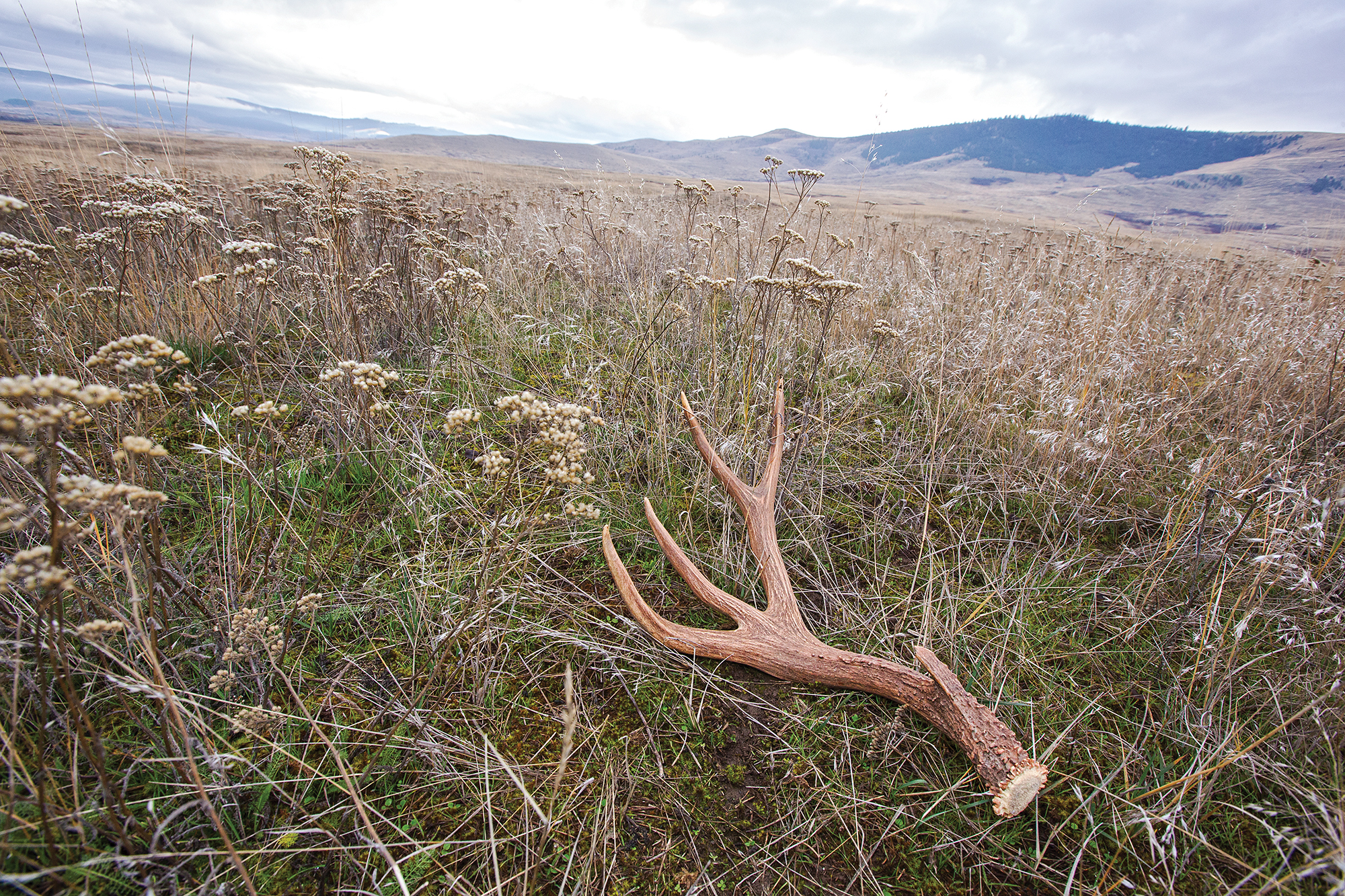
Glass Herds from a Distance
Don Schaufler owns and operates Antlers Unlimited (antlersunlimited.com) and Antler Designs (antlerdesigns.com) in Ennis, Mont. He started hunting sheds more than 40 years ago.
“Big bull elk winter in bachelor groups,” says Schaufler. “A shed hunt starts with glassing those small herds over time. Work from a distance, and get to know where they are hanging out. As the snow line recedes up the mountain, they’ll go with it.” If a bull group you’ve been watching dwindles in size, that’s a good thing: You now know where the antlers are. “As bulls drop their antlers, they leave the gang. Bulls compete for pecking order all year long, and an antlerless bull knows he’s vulnerable.”
Cover Ground With Optics
Many areas restrict access until elk are off their winter range. Once you’re allowed onto the land, get to where you watched a bull group shrink, and start looking.
“Elk shed hunting itself starts with glass, too,” says Schaufler. “Good elk antlers are big, and you can spot them from a distance. Save yourself steps.”
Go for a matched set. “If you find one antler, especially a big one, there should be another nearby,” explains Schaufler. “Bulls just hate the imbalance when one antler is off. They’ll shake their head to get rid of the other, for relief. I once found a perfect matched set lying in the shape of a cross.”
Don’t Stress Out Mule Deer
Scott Wait is a senior biologist with Colorado Parks and Wildlife. He’s also a long-time mule deer chaser and shed hunter.
“Mule deer winter in bush-and-shrub habitats,” says Wait. “This means piñon, juniper, mountain mahogany, bitterbrush, and sagebrush. Look for gentle slopes that face south or west… Most years, big mule deer are going to drop their antlers during the last couple weeks of January. Smaller bucks may hold theirs longer, into March. But you should wait to go shed hunting. Winter gives mule deer enough stress the way it is.”
Avoid Re-walking Areas
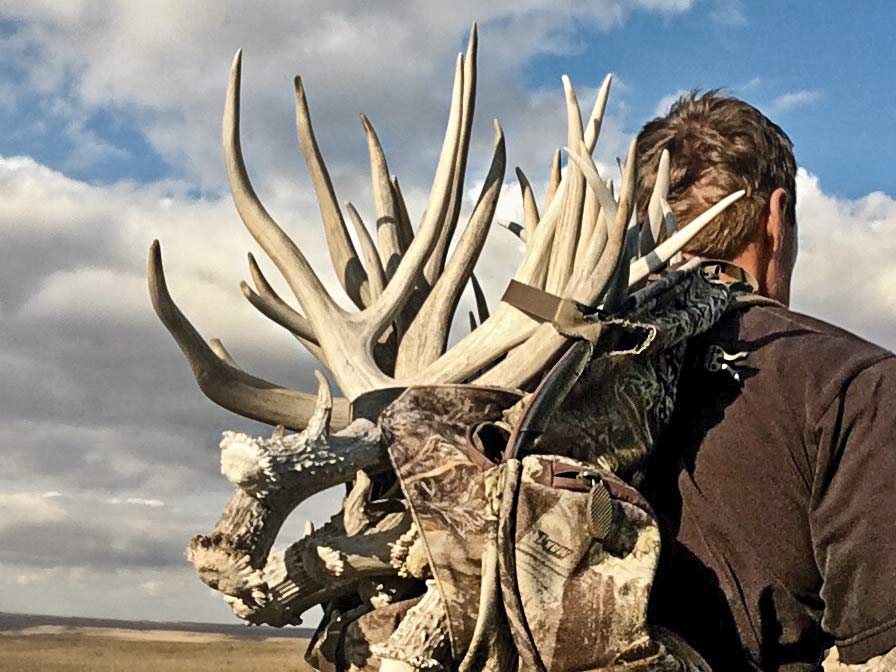
Mule deer country is big. To avoid re-walking an area, do a walk-stop-and-circle search instead: Stop every 50 yards or so and do a 360-degree look around, to take advantage of new viewpoints. When you find an antler, imagine four quadrants around it, and search each area for a companion antler, which will often be within 50 to 75 yards.
Work Smarter and Have a Plan
If the area that’s holding elk has drivable roads, fill up the tank and start driving. Bring a good binocular and a high-power spotting scope with a window mount on your drive, and you’ll be even closer to success. The method is pretty simple: Drive every inch of the roads that the elk or deer travel and glass any possible location where they could have lost an antler. These sheds will be easy pickings and you want to get to these first. — Aron Snyder
Be Consistent
Check your area as often as possible. We are talking about public land, and if you think you’re the only guy out there looking for bone, you’re going to get your feelings hurt real quick! Getting to know the locals is another good idea. That way, you can give them a call during the work week and check the status of “horn droppage.” — Aron Snyder
Search the Upper Third
In my experience, mule deer in the West tend to bed on the upper third of any hillside. This gives them the best vantage point facing downwind while smelling any potential threats coming from the upwind backside of the hill. Searching these areas can help you find a lot more sheds out West, as it helps break down the monotony of what can seemingly feel like contiguous prairie grasslands. In the winter specifically, focus on the upper third of hillsides that face away from the predominant wind. — Derek Horner
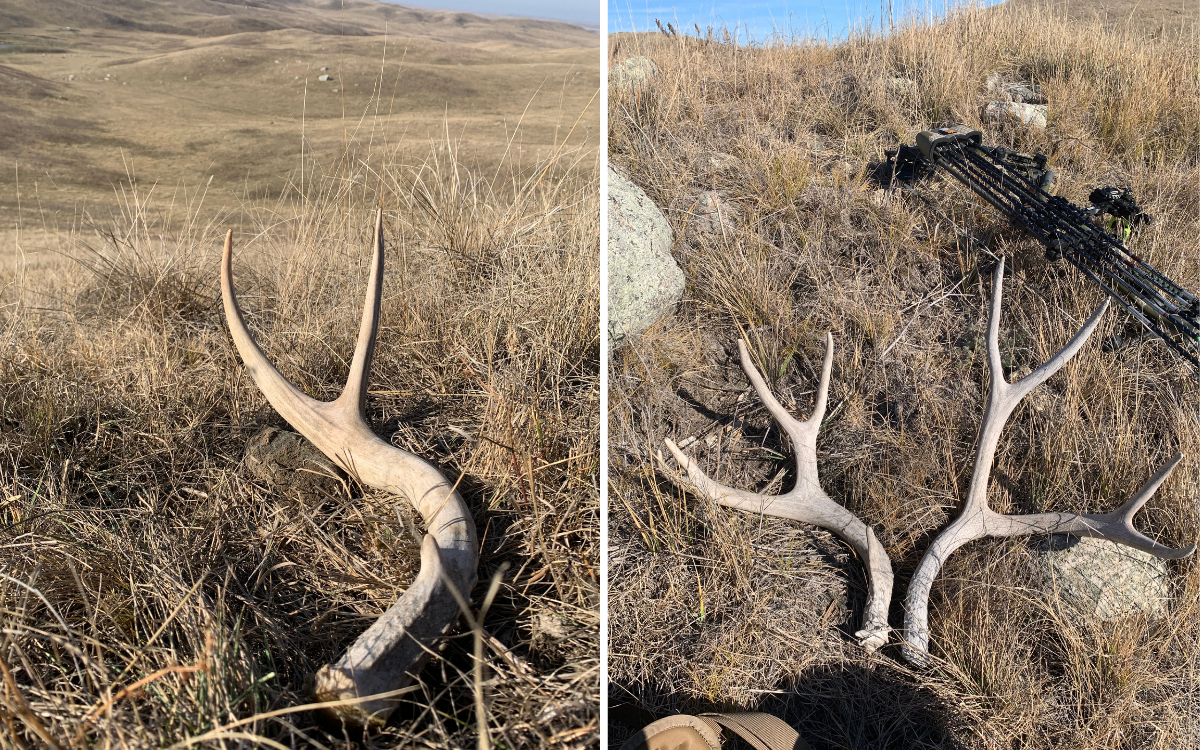
Saddle Up
I’ve got another rancher friend, this one who lives on the Milk River in Montana, who saddles up his horse and rides for miles along the river banks and through the adjoining woodlots and points. “I can’t tell you how many sheds I’ve found that I walked right by days and weeks before,” he says. “Antlers are easier to see when you look straight down from a horse.” —Michael Hanback
Cows Can Help You Out
An old-timer in Wyoming who finds more than 100 whitetail sheds on his river bottom ranch every year taught me this trick. Look in a wooded area that was recently grazed by a herd of cattle. The cows uncover and kick up fresh antlers from this year, and chalky ones that are a year or two old.
Run a Shed Hunting Dog
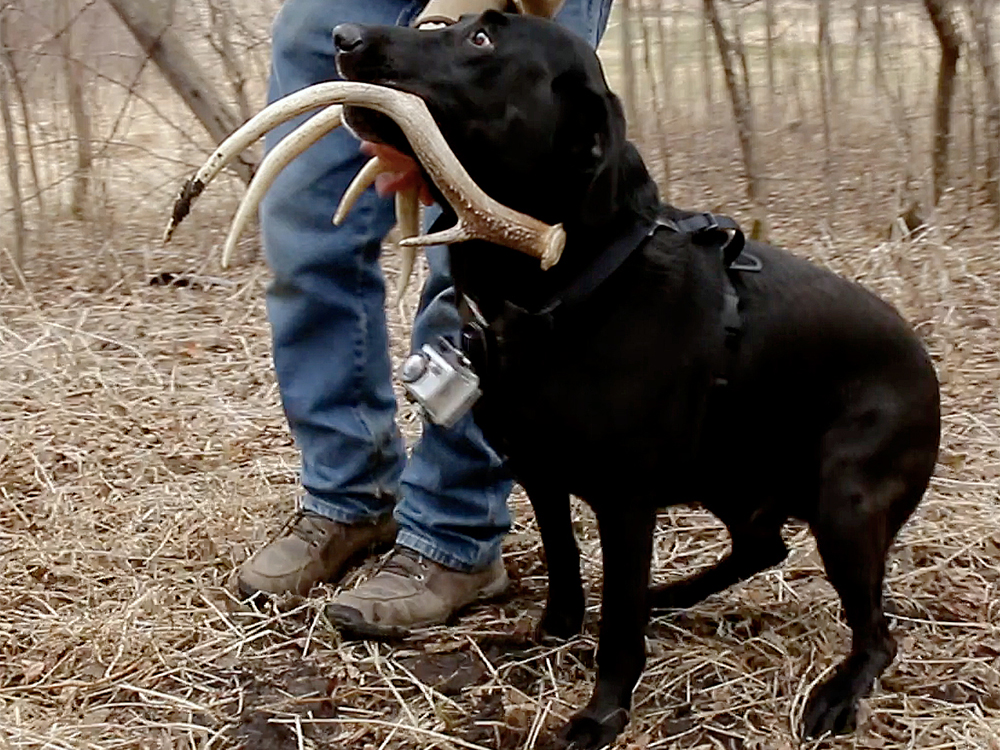
Using a dog to hunt antlers “is the fastest growing dog sport in the U.S.” says Minnesota trainer Tom Dokken, America’s foremost authority on shed dogs.
The Labrador retriever is by far most popular, but Dokken says that any breed with a strong instinct to retrieve can pick it up quickly. “With just a little basic training, a bird dog can learn to find sheds, and then he can multi-task between retrieving ducks and shed hunting in spring,” he says. Hunting dogs are particularly good shed finders because they quickly zero in on the calcium-phosphorous odor of antlers.
You can train your family pet, say a Lab or golden retriever you keep in the house, to hunt sheds. “We’re seeing all sorts of people who just want to get out in the woods in the spring and have some fun with their dogs,” says Dokken. “If your dog likes to retrieve anything, a ball or training dummy or whatever, that’s the game. Just substitute an antler, get your dog used to finding and picking it up and having fun with it, and you’ve got the makings of a shed dog.”
READ NEXT: 7 Myths About Shed Hunting Dogs
If You Find a “Deadhead” While Shed Hunting
As you roam the woods there’s a chance you’ll stumble across a “deadhead,” or the skull and antlers of a buck that perished months earlier. Any number of things could have caused the buck’s demise: hit by a car, lost by a bowhunter last season, Hemorrhagic or even Chronic Wasting Disease.
Most deadheads have small to medium-size racks, but each year a few people chance upon a monster.
A few seasons ago, my buddy Drew had been bowhunting the same buck for 3 years. “It was a truly remarkable animal that we called Moose,” he says. Unfortunately, Moose died due to another bowhunter’s mistake, and Drew recovered his skull and antlers the following spring. “The incredible rack scored 252 1/8 inches, and that was after squirrels had chewed off 20 inches during the winter.”
A deadhead like Moose is an incredible if sad find. But before you run and post a picture of it on Facebook or Instagram, keep in mind that in most states you need a salvage permit or at least permission from a conservation officer before you can possess any buck with skull and antlers attached. Check your state regulations for salvage requirements, and if it’s unclear, call a local game warden for advice. Wardens watch social media, as they should, so don’t get jammed up.
READ NEXT: Ohio Hunter Finds a Massive 233-Inch Deadhead Buck
How Much Are Shed Antlers Worth?
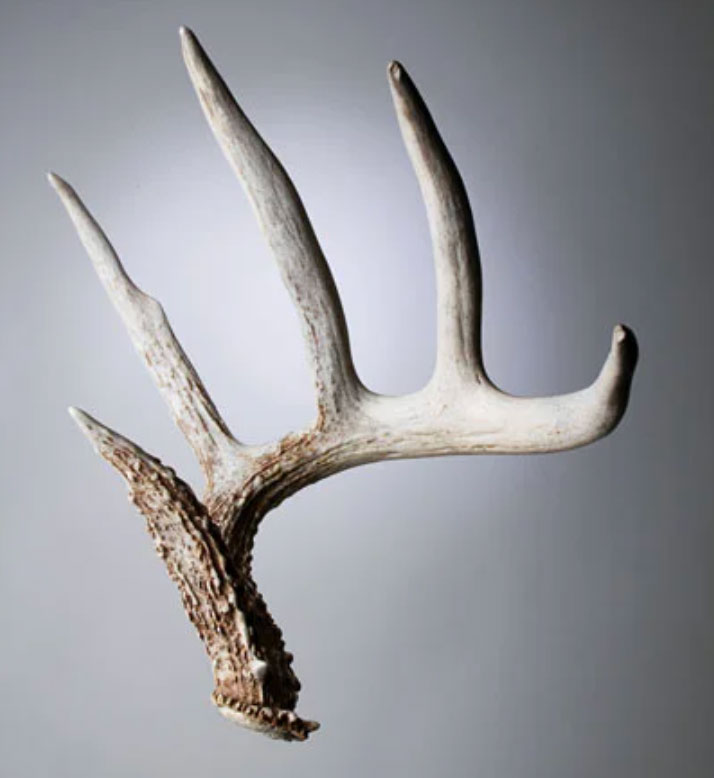
Say you find 30 or so more sheds this spring and add them to your growing collection. You might want to sell some, so how much are they worth? It depends on the condition and grade of the bone:
Grade A: Antler in perfect condition, brown and beautiful, with no fading, broken tines or chew marks. This year’s drop and picked up within a few weeks or months. Prices vary among antler buyers, but Grade A bone is currently fetching $16-$20 a pound.
Grade B: Antler in good condition, still natural brown color, may be a bit dull or faded on one side and slightly weathered, probably last year’s drop. May have a chip or slight broken tine. Currently bringing $6-$10 a pound.
Grade C: Antler faded and weathered to white and chalky, maybe with some green color, likely on the ground for 2 or 3 years. Worth $1-$2 a pound if you’re lucky.
Shed Antler Facts
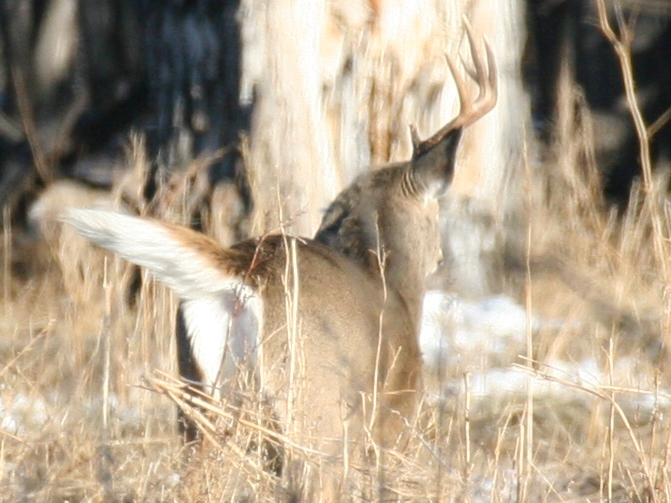
— After the rut, decreasing testosterone levels cause an “abscission layer” to form between the antlers and their pedicels. As the connective tissue dissolves, the bucks’ antlers become loose and fall off.
— Bucks drop their racks from late December in the North through March and April in the South.
— Weather, snow depth, altitude and particularly food availability and nutritional value can influence when antler loss takes place.
— If your area has an early rut, bucks’ testosterone levels will decrease earlier and, as a result, some deer will cast their racks two to four weeks earlier than usual. A severe winter with a lot of snow can also cause stressed deer to shed earlier.
— It was once believed that bucks withdrew to a secluded place to shed their antlers—away from does and rival bucks—thus avoiding a public loss of virility. Today’s top biologists nix that idea, saying deer are probably unaware of when and where they’ll lose their headgear.
— Most older bucks shed antlers earlier than younger bucks do.
— The specific time a buck will shed his antlers might be determined heavily by his individual antler cycle. This is independent of other bucks’ cycles and is probably centered on birth date.
— A study in Mississippi found that individual penned bucks usually shed their antlers during the same week each year. Other studies of captive deer show that bucks usually shed both antlers within three days of each other.
